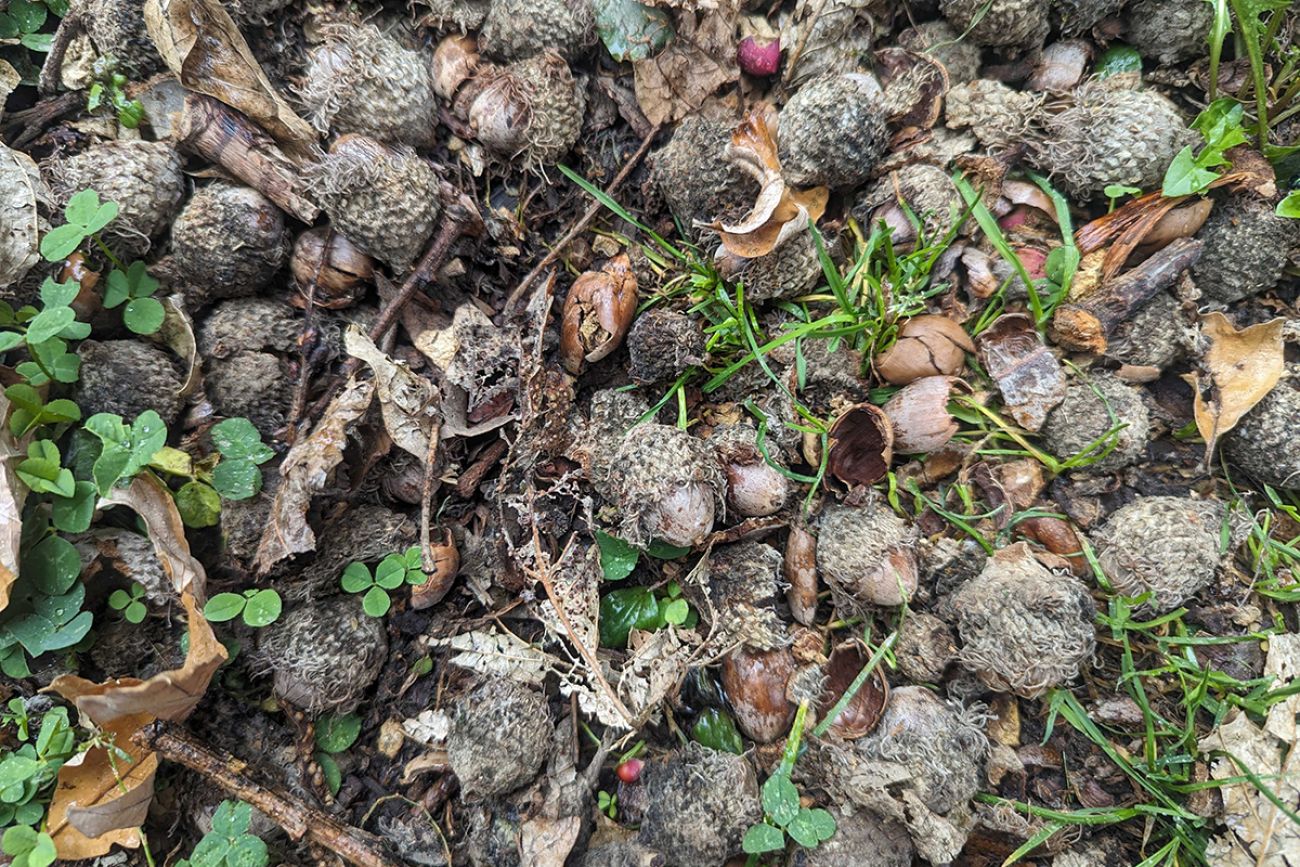Got acorns? Michigan has tons and tons, amid ‘mast year’ for oaks

- Northern oak trees in parts of Michigan are masting, a semi-regular phenomenon that overproduces acorns
- Mast events can be unpredictable, but they generally happen every 2 to 5 years.
- Squirrels are chowing down on the nuts, which are dangerous to dogs and other animals
Oak trees in many parts of Michigan are “masting” — producing tons and tons of acorns — which is great news for squirrels, but less so for dogs or humans who have to pick up the nuts.
So-called “mast events” happen every two to five years that cause several tree species, including oak, walnuts, hickory and beech, to produce excess seeds.
This year, oak trees are masting, especially the northern red oak, which is the most common tree species in Michigan. They can reach up to 75 feet tall and can live up to 500 years — and are identified by their rigged, light gray bark, red and bronze leaves.
Related:
- In warming Great Lakes, climate triage means some cold waters won’t be saved
- Climate change threatens fish in Michigan’s Great Lakes. Watch video
- Climate change is harming Michigan hunting and fishing, groups warn lawmakers
In many parts of the state — and the nation — oaks are dropping an abnormal amount of acorns, which means squirrels are happy and likely to have more babies next spring, experts say.
But the overproduction of nuts isn’t exactly uniform statewide.
"Every tree across the state is not on the same schedule,” said Blair Tweedale, Gladwin unit manager for the Michigan Department of Natural Resources.
“Generally, you will have some areas that are producing a normal amount of acorns, some areas that are not producing any acorns and other areas that are over producing.”
Michigan is home to over 10 native oak tree species. Globally, there are over 600.
Theories abound about why masting occurs, but some experts believe that trees occasionally produce more food than animals can eat to guarantee there will be leftover seed to grow new trees.
But masting can be strenuous to trees because it requires a lot of resources and energy.
If there are late spring freezes, extremely high temperatures, summer droughts and other extreme fluctuating weather conditions, masting becomes more difficult for trees.
It’s difficult to predict masting season because Michigan often experiences drastic weather changes, but oak trees tend to overproduce in years in which there was a hot and dry growing season, followed by warm late winter, and an early spring.
“If you have things that stress the tree like drought would either reduce the size or the number of acorns,” Tweedale said.
The lack of rain in the early part of the summer was concerning, but Tweedale said that the dry summer hasn’t had an impact on the acorns so far.
“One thing that is very apparent is that when they do have those large mastering years in that area, they tend to overwhelm the squirrels,” he said.
Over 100 species feed on acorns including deer, chipmunks, wild turkeys, rabbits, raccoons, wood ducks and squirrels.
The irregular cycle shocks acorn-feeding animals into not eating all the acorns during a masting year, so there are enough seeds to produce the next group of acorns.
“We have lots and lots of squirrels, that's for sure,” said Michale Murphy, park manager for Gladwin City Park and Campground. “I've seen deer across the river, but deers prefer white oak [acorns].”
At the city park, red oaks are masting but not so much for white oaks, Murphy said.
“The red oaks will produce a lot of mast one year and then the next year or a couple years later, the white oaks will produce another mast. So they go in cycles.”
Some acorn-eating animals like deer, cottontail rabbits and black bears prefer white oak acorns because acorns from red oak trees contain more tannins, a group of plant compounds that make the acorns bitter.
The excessive acorns may be good for squirrels but bad for dogs. Tannins are poisonous to dogs, causing an upset stomach, abdominal pain and kidney failure.
It may be difficult for dogs to walk on sidewalks and parks covered in acorns, because the pointy nut can hurt the dog’s paws.
Michigan Environment Watch
Michigan Environment Watch examines how public policy, industry, and other factors interact with the state’s trove of natural resources.
- See full coverage
- Subscribe
- Share tips and questions with Bridge environment reporter Kelly House
Michigan Environment Watch is made possible by generous financial support from:
Our generous Environment Watch underwriters encourage Bridge Michigan readers to also support civic journalism by becoming Bridge members. Please consider joining today.
See what new members are saying about why they donated to Bridge Michigan:
- “In order for this information to be accurate and unbiased it must be underwritten by its readers, not by special interests.” - Larry S.
- “Not many other media sources report on the topics Bridge does.” - Susan B.
- “Your journalism is outstanding and rare these days.” - Mark S.
If you want to ensure the future of nonpartisan, nonprofit Michigan journalism, please become a member today. You, too, will be asked why you donated and maybe we'll feature your quote next time!






